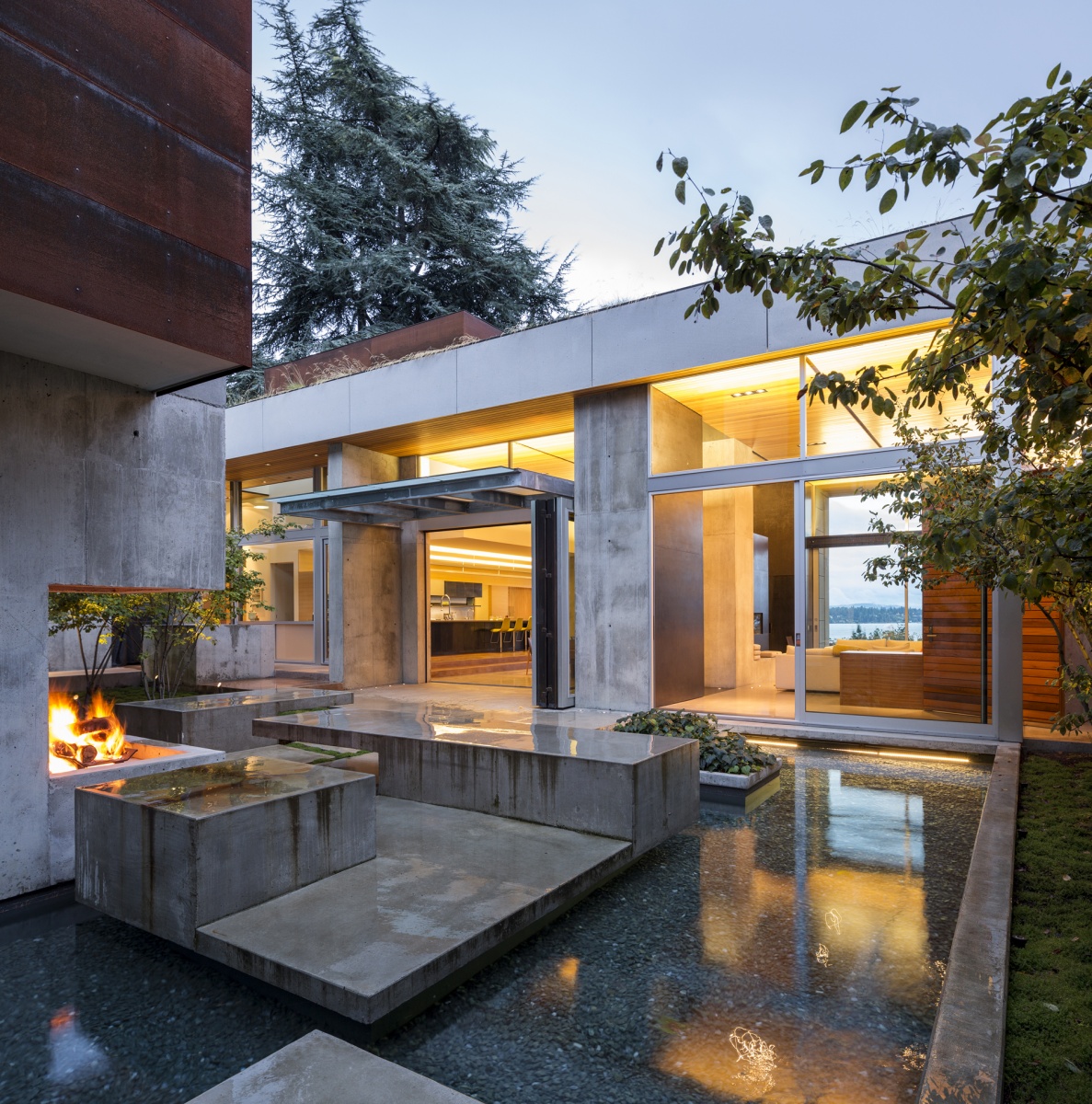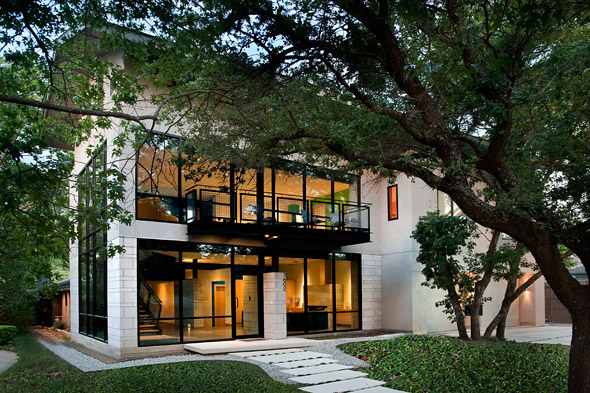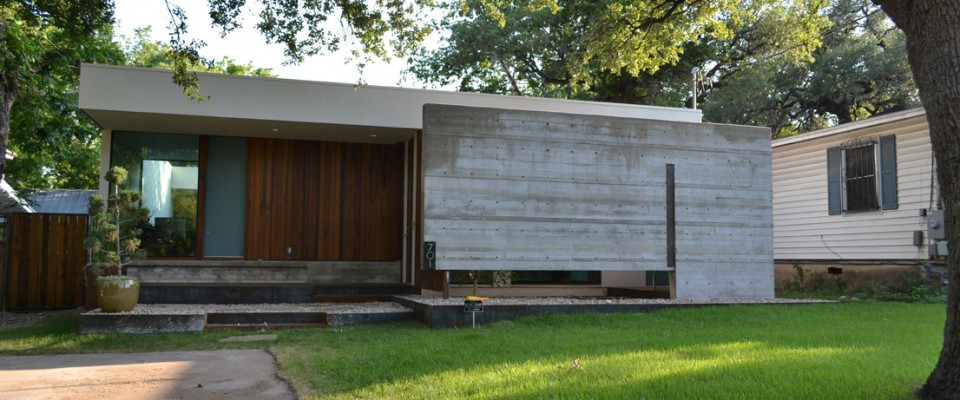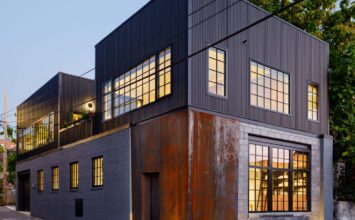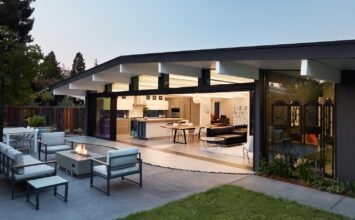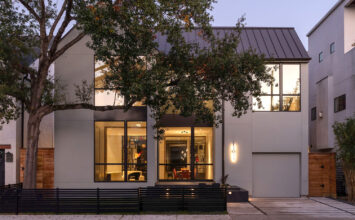
In the late 1920’s, the University of Washington produced a young architect who only a few years later would introduce modernism to Seattle.
Paul Thiry – a native Alaskan, the son of French parents who were drawn to the region during the Gold Rush, and a med school dropout who couldn’t stomach his first cat dissection – is a considered by many to be the father of architectural modernism in the Pacific Northwest. In 1928, equipped with a classical Beaux-Arts training from UW, Thiry traveled the world and encountered pioneering modernists Le Corbusier in France and Antonin Raymond in Japan. Returning to Seattle in 1935, Thiry introduced to his contemporaries the International Style architecture, and from there it spread throughout the Pacific Northwest.
Over the course of his long and controversial career, Paul Thiry left behind many modernist structures in Seattle, including the original Seattle Center Coliseum – now called KeyArena – a prime example of structure-as-sculpture.
Modern Home Tours returns to Seattle this weekend, and to brush up on our knowledge of Seattle’s modern history, we sat down with architect Eric Cobb. Eric, who designed two of the homes featured on this weekend’s tour, shared with us his thoughts on Seattle’s rich mid-century modern history, the cosmopolitan influence of the local tech industry, and how the city is taking the next step in its modern development.
All photography from this post are of homes designed by E. Cobb Architects. To see his homes in person, be sure to grab your tickets for the tour!
Q&A w/ Eric Cobb
You were born and raised in Seattle. Can you walk us through some of the history of the area, architecturally speaking, and especially speak to the culture of modern design?
Yes, I was raised in Seattle, attending Lakeside High School and the University of Washington, then left for 10 years of eye-opening architectural experiences in San Francisco and New York. Coming back to Seattle, I clearly saw the city through different eyes. In addition, Seattle had grown (and continues to grow) in terms of its architecture and appreciation for the built environment. Forty years ago in Seattle, the general public had tremendous awareness and appreciation of the surrounding mountains, forests and waters, but relatively little awareness for how architecture could engage nature. I would even go so far as to say that architecture was commonly viewed in opposition to the natural environment (and perhaps rightfully so, given the quality of some of the work). Nonetheless, the Northwest has a significant mid-century modern history, largely stemming from the creative wood framed explorations of Roland Terry, Paul Thiry and Paul Kirk. These architects were influenced by the radical “International Style” work coming from Europe, several young experimental architects in California, and Frank Lloyd Wright.
This Northwest modern work introduced an open, flowing space into architecture, and brought light and engagement with outdoor spaces into a three-dimensional composition. In the Northwest, with its powerful outdoor context, the potential for architecture to engage nature and light was obvious. However, despite the provocative explorations in the 40’s and 50’s in Seattle, it has taken decades for the next meaningful step to take weight.
The next significant influence to Seattle architecture has also come from outside, but this time, in the form of patrons and clients. With the growth of the local technology industry, Seattle has lured smart, talented people from all over the world, bringing a rich cosmopolitan influence to the region. This worldly perspective has opened doors for further modern explorations, specifically in the development of built landscape and built structures engaged with architecture and nature. Design risk-taking on a larger scale has also taken shape at the Sculpture Park, the Central Library, and the Chapel of St. Ignatious.

- E. Cobb Architects: 2311 West Newton St. #301
Looking toward the future, how do you see this area evolving, culturally and architecturally?
The growth is continuing, and density is becoming more valued within the city. This means that architecture is even more important in shaping living and dwelling conditions. Also, with an increasingly cosmopolitan culture, there is more appreciation for experimentation, differences, and unique opportunities. The spirit of experimentation and opportunism lie ahead.
How did your upbringing in this area influence your work as an architect and your design aesthetic?
My mother is a sculptor, and my father a doctor, so science and art were both everyday factors in our household. However, it wasn’t until I climbed the winding spaces between the inner dome and the outer dome of Brunelleschi’s Duomo in Florence, did I know I wanted to be an architect. Occupying the space between the inner and outer domes, the actual space that enabled the two shells to work together structurally to achieve the massive span, gave me a profound understanding of how structure and space could be related. In fact, just this year, I had the opportunity to bring my two children to the same amazing space.

- E. Cobb Architects: 2311 West Newton St. #301
You designed 2311 West Newton Street #301. Tell us a bit about this project and a few features tour-goers should be sure to keep an eye out for.
The West Newton Flats, and its rooftop penthouse, is an example of how an unconventional site, program, and design approach can transcend expectations. In particular, note how the re-orientation of the unit geometries, away from the street grid, responds to the hillside topography and views of downtown Seattle and Mount Rainier. The penthouse also expands onto broad roof deck spaces, crosses buildings with bridges, and wraps around the central courtyard. Note the wood ceiling in the great room – an experimental finish technique applied to hickory.
Also, with underground parking for each unit, accessed from the bottom of the street, the alley is not needed for parking or refuse collection. Instead, the alley flows into the pedestrian courtyard, creating urban outdoor space.
You studied and worked in NYC for a while before returning to Seattle to found your own firm, E. Cobb Architects. Tell us a bit about how you came to found this company and its ethos.
Attending Columbia University, and working for several brilliant architects in NYC, I saw first-hand how a commitment to modern experimentation and opportunism could create an inspiring career. The spirit of relentless, smart problem-solving, authenticity at all costs, and collaboration with risk-takers is what I brought with me to Seattle. Where I could experiment on my parents for my first project!

- E. Cobb Architects: 4100 East Highland Dr.
Where do you see your craft going?
Without a doubt, architecture and its relationship to the exterior has great depths to be explored. We expect to push this further in our own work in the future. We have also found that with increasingly complex permitting and entitlement requirements, on challenging sites in our highly contoured environment, that smart, creative solutions have even more value. Unique conditions create opportunities that require special solutions, and this is gradually becoming recognized by the public. Standard design solutions will be viewed less favorably as the industry and region continues to develop.
I can see the factors of growth, the national and international population, and increasingly complex building requirements begin to frame a rich environment for Seattle architecture. This is true for residential architecture as well as other types of spaces. We have applied the same creative thought process to our first restaurant (Mamnoon on Capitol Hill), and several creative work environments. Without a doubt, architecture and its relationship to the exterior has great depths to be explored. We expect to push this further in our own work in the future. We have also found that with increasingly complex permitting and entitlement requirements, on challenging sites in our highly contoured environment, that smart, creative solutions have even more value. Unique conditions create opportunities that require special solutions, and this is gradually becoming recognized by the public. Standard design solutions will be viewed less favorably as the industry and region continues to develop.
It feels like Seattle has finally embraced it’s modern history, and has begun to take the next step on the path of Terry, Thiry, Belluschi and Kirk.

- E. Cobb Architects: 4100 East Highland Dr.
